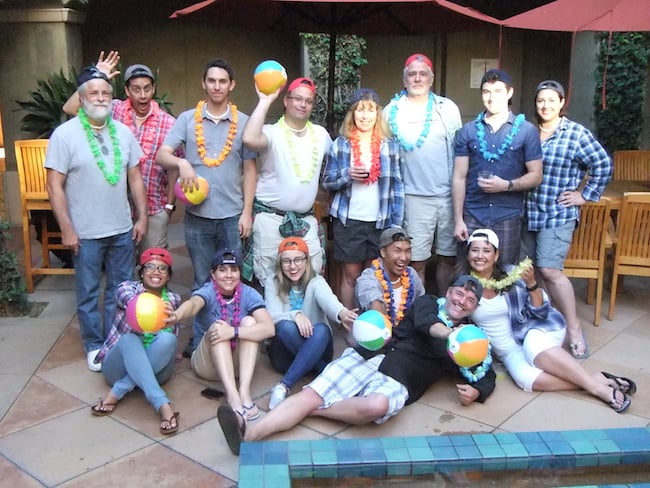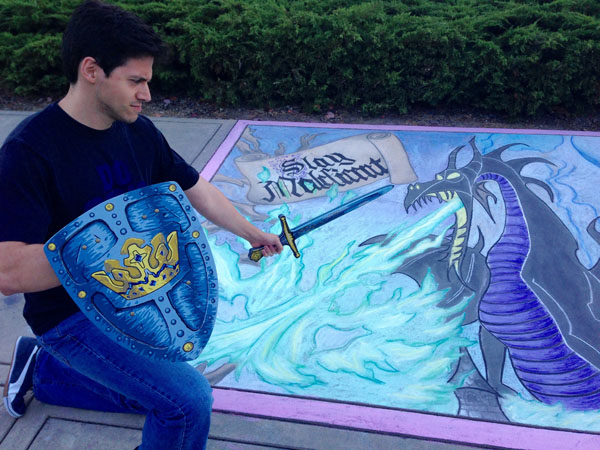Recently, Patrick Ferguson, Lead Compositor at Method Studios in Los Angeles, joined VFX Curriculum Director Ben Fischler to discuss Method’s work on Super Bowl ads, their workflow, and what they look for in artists. Today, the Method team returns to share more of their creative magic and insights. Joining us to continue the VFX Are Everywhere blog series are Jeff Werner, Method’s Design Studio Manager and Keith Roberts, Method’s newest Animation Supervisor.
Thank you to Patrick, Jeff, Keith, and all of our friends at Method Studios.
Enjoy.
The Animation Mentor Crew
Our blog series is titled “VFX Are Everywhere.” What is one project you’ve worked on at Method that most people wouldn’t know include visual effects work?
Jeff: Once we did a 50-foot purple dragon for a cell phone commercial, just kidding. The best “Seamless” — as we call it — visual effects show we have done would have to be for the movie Argo, where we created the Azadi Tower as it looked in 1970 and all the surrounding environment with a full rush hour feel filled with people and cars as the camera swept in close. Also, at the most dramatic moment when they are escaping at the end, all the close up airplanes on the runway were CG. Shhhh — don’t tell anyone.
Keith: VFX are everywhere — yes they are! It’s often more easy to tell if you see something fantastical but VFX has become so price competitive that there are very few shots in any movie that has not had some kind of VFX enhancement. Take a look at the Method Reel on our website, it has a lot of making of footage and you will be surprised by how many things are not shot in camera, but are layered in afterwards using VFX.
Please explain how your specific role works at Method.
Jeff: I’m the Design Studio Manager and I manage most of the artists as in hiring, placement on jobs, and reviews. I work to keep a positive and proactive environment for and with the artists to help projects finish on time. This is done by actively being involved with hiring and developing new talent for the future and daily maintenance of studio projects. I am also involved with global connectivity of all the Method Studios.
Keith: An Animation Supervisor at Method is involved in all of the work that comes through the department — whether it be the technical aspects of how it will get done as well as the creative aspects of what the finished animation should look like. The Animation Supervisor casts the shots to the animator and meets with the film director to generate ideas and distill what the needs of each shot are from an animation and narrative perspective.
What has been your favorite project to work on while at Method?
Jeff: I would have to say it is a split between a Kia commercial, where we created furry hamsters and robots that were dancing to the LMFAO hit song “Party Rocking” and then the feature film Cloud Atlas. Both projects were very complex with big teams and both had a lasting success that people remember. Cloud Atlas was in the final 10 films to be considered for an Oscar. It’s a great feeling to go see a project on the big screen and have a sense of pride in what your artists and company have accomplished.
Do you manage commercial and feature work differently? If so, what are the main differences?
Jeff: Both commercials and film can be managed the same as the tasks to get them set up are similar but it’s the time you have to finish them in, is the difference. Commercials need to be set up and staffed quickly because they are due in weeks, while a film needs to be set up quickly but the ending date is months away, so a bit more room to configure.
Keith: The most critical element of the animation of course is that it has to fulfill the expectation of the film director. The second most critical element that helps the other departments further along the production pipeline is that the animation is valid from a spatial and technical perspective — that is, can the tech department simulate the clothes or skin accurately, can the lighters cast shadows on surrounding geometry and terrain accurately etc.
The collaboration between animators and other departments is constant over the production life of the show. If the track looks off we try to shoot out other angles to show the tracking department the issues. The lighting department does the same for us if they see an issue. Often, pictures can more accurately describe the problems we encounter than words. But we are constantly involved with the artists from other departments before and after the animation process to make sure our animation is valid technically.
Given Method’s global nature, can you talk about the successes and challenges of working within a global pipeline?
Jeff: We currently are working on our global pipeline so that is our current challenge. But our current methods of globally working together are pretty basic but we’re aiming to make it a system that will best utilize our global resources.
Keith: Method is refining connections between our international facilities. The goal is to share assets and artists and to pool knowledge and talent to make us more economical and better able to meet the ever-increasing quality of VFX for films and commercials. The mirroring of pipelines and tools is very important as it makes Method a functional and robust company.



